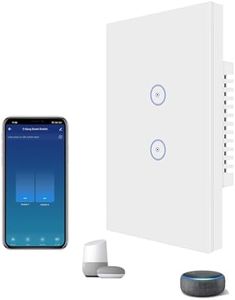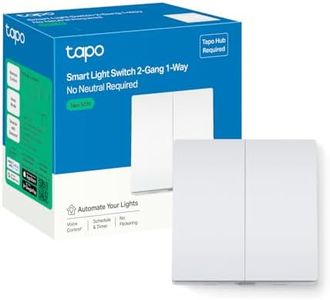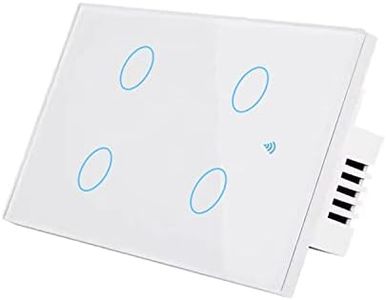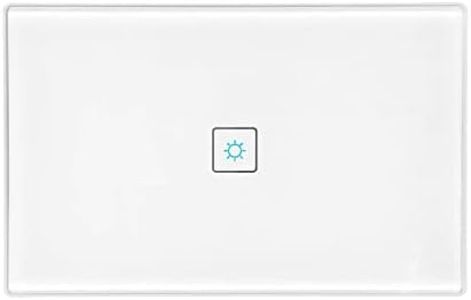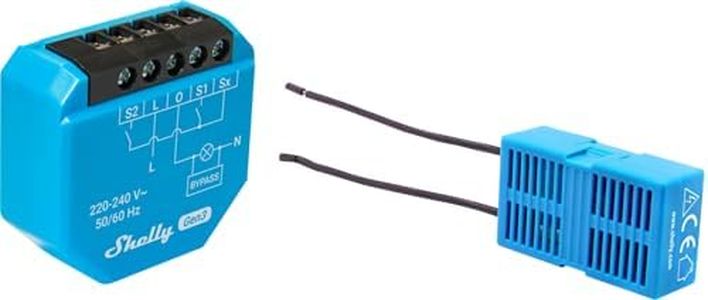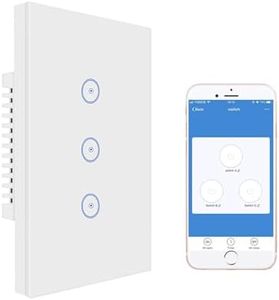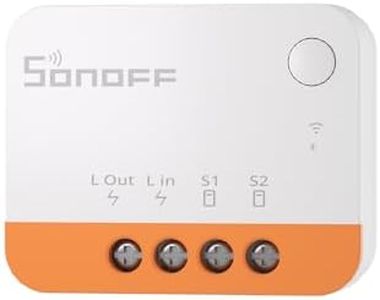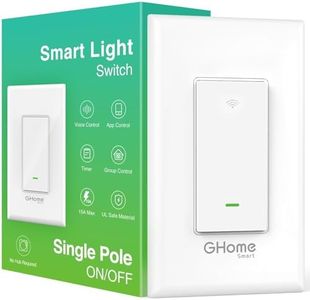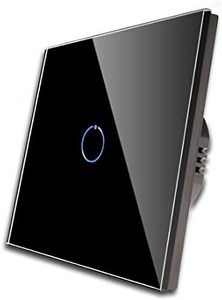We Use CookiesWe use cookies to enhance the security, performance,
functionality and for analytical and promotional activities. By continuing to browse this site you
are agreeing to our privacy policy
10 Best No Neutral Smart Switch
From leading brands and best sellers available on the web.Buying Guide for the Best No Neutral Smart Switch
Choosing a no-neutral smart switch is a great way to make your home smart without needing to rewire your electrical system. These switches are designed for homes where traditional wiring doesn't provide a neutral wire in the switch box, making them much more versatile for older houses. To choose the best fit, it’s important to consider your needs in terms of compatibility, control options, and how easy it is to install and use. Understanding the key specs can help you make a more confident and suitable choice.Wiring CompatibilityWiring compatibility refers to whether the smart switch can be installed in homes that lack a neutral wire, which is common in many older homes. This is important because traditional smart switches generally require a neutral wire to work properly. No-neutral switches use special technology to function without this wire. When exploring options, look for switches specifically labeled as 'no-neutral required.' It's crucial to ensure this because otherwise the switch might not work or could be unsafe. For your need, if your switch box doesn't have a neutral wire (normally a white insulated wire), a no-neutral smart switch is the best choice.
Load Type and WattageLoad type refers to the kind of lights or devices the switch can control, such as LED, incandescent, or CFL bulbs. Wattage indicates the maximum amount of electrical power the switch can handle. This is important because using a switch with incompatible loads or exceeding wattage limits can result in flickering lights or even safety risks. With no-neutral switches, lower wattage LED bulbs sometimes need a bypass accessory to work smoothly. To choose correctly, check the type and total wattage of the lights you plan to control and make sure they fall within the switch's supported range.
Smart Home Ecosystem CompatibilitySmart home compatibility describes the platforms and voice assistants the switch works with, such as Alexa, Google Assistant, or Apple HomeKit. This is important because you’ll want your switch to integrate with your current smart home setup, allowing easy control through voice commands or automation routines. When comparing switches, segment them by which systems they support. If you already use a system (like Amazon Alexa devices), prioritize switches guaranteed to work smoothly with it to ensure a seamless smart home experience.
Control MethodsControl methods include the ways you can operate the switch: manually, through a mobile app, by voice, on a schedule, or with automation. This matters because it impacts ease of use and flexibility. Some users prioritize touch or app control, while others want to set lighting routines or use voice commands. Look for switches offering the mix of controls that fits your habits—those who like tech features might prefer a model focused on app and voice integration, while others may want simple wall and schedule operation.
Installation ProcessInstallation process involves how complex it is to install the switch, including whether it fits your electrical box and what tools or skills are needed. No-neutral switches are usually designed to be easier for DIYers, but some require a bypass or extra steps for LED lights. Check how the installation is rated: some are truly 'plug and play,' while others need simple wiring. If you are not confident with electrical work, look for a switch with clear instructions and good support, or consider getting professional help.
Reliability and Safety CertificationsReliability and safety certifications refer to whether the switch has been tested and approved by safety organizations like UL or ETL. This matters for your peace of mind and the safety of your household, as certified switches are checked for proper operation and protection against electrical faults. Make sure any switch you pick is certified to national standards, especially since no-neutral designs use specialized components. Prioritizing certified products helps ensure a safe and dependable setup for the long term.
